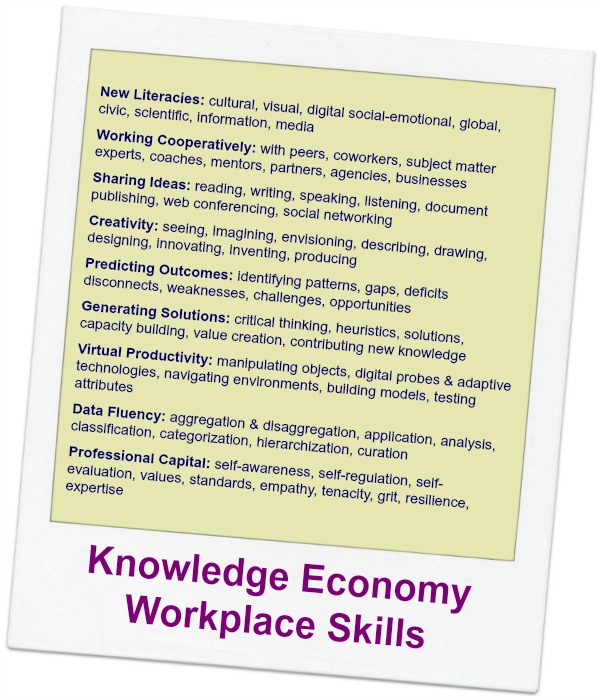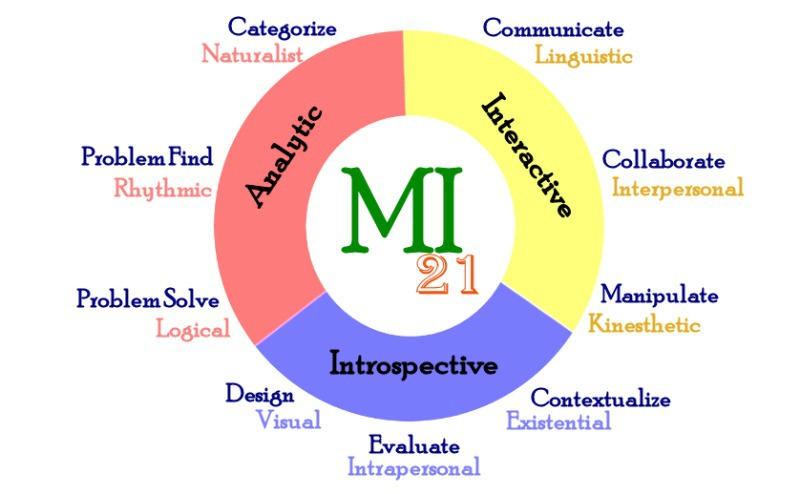|
Society is quickly shifting, and so with it shifts the dialog about meaningfully learning and contributing. What used to pass for preparation to participate in a democratic society with a free market economy no longer holds true. Public schools currently reflect the 1900s more than the 2000s, even as education bureaucracy has clamped down and locked in on traditional, measurable standards and assessments. Instead of opening things up to the marketplace of ideas, public schools have opened themselves up to the assessment and technology marketplace, investing in solutions to document and justify the last century’s ideals. This will change; societal pressures over time will ensure that. No civilization maintains irrelevant institutions. As the conversation continues to evolve, specific skills that are valued in the knowledge economy workplace are being identified:
While educators make the shift to provide learning experiences that support the development of these new and valued skills, the ways we learn remain the same. Howard Gardner’s framework for human intelligence offers a practical, empirical model for addressing all the paths to learning, regardless of the content, skills or desired outcomes. These distinct pathways to learning are: Linguistic: expression through the spoken and written word. Logical: problem solving through reasoning. Visual: having the ability to see, envision and imagine. Kinesthetic: interacting with one’s environment. Interpersonal: interacting with others. Intrapersonal: affective learning, values and attitudes. Rhythmic: identifying and extending patterns. Naturalist: classifying and categorizing data. Existential: using contexts and connections to prior understanding. You can learn more about each pathway to learning here.
Looking across from skills to intelligences, we can identify actionable, observable competencies that knowledge workers must be able to demonstrate to be successful in today’s workplace:
There is a natural correlation between the skills valued in the 21st century workplace and the paths to human learning and productivity.
In addition, the intelligences can be categorized into three instructional domains that empower teachers to target instruction by specific clusters of intelligences:
There are a number of instructional implications for these domains, which can be explored in more detail here.
Given these working definitions, a new model emerges illustrating the relationship between 21st century skills, each of the intelligences, and the competencies that today’s workers must possess:
Instead of turning Gardner’s model inward to examine individual intelligence profiles, this new model points multiple intelligences theory outwards to identify a communal intelligence profile that aligns to specific, highly valued skills. Furthermore, each of the intelligences support the acquisition and mastery of analytic, collaborative and generative competencies key to workplace productivity and success.
As society and citizenship become more global, Gardner’s definition of intelligence resonates strongly: “…the ability to find and solve problems and create products of value in one’s culture…”
Using this model mindfully, educators can apply the principles of Gardner’s multiple intelligences theory in planning and implementing learning experiences that:
While Howard Gardner created his intelligence theory at the dusk of the industrial age, his greatest impact may well be its application in the dawn of the information age. http://surfaquarium.com/MI/MI21.htm Copyright ©2014 No portion of this page may be cited, copied, repreinted or distributed without written permission |




